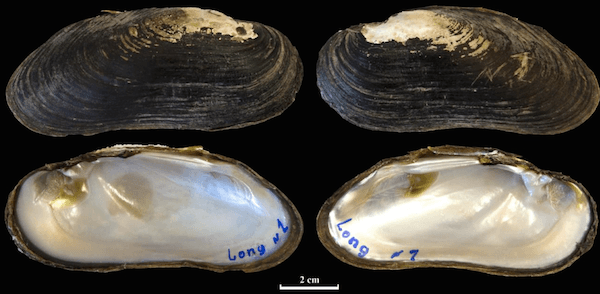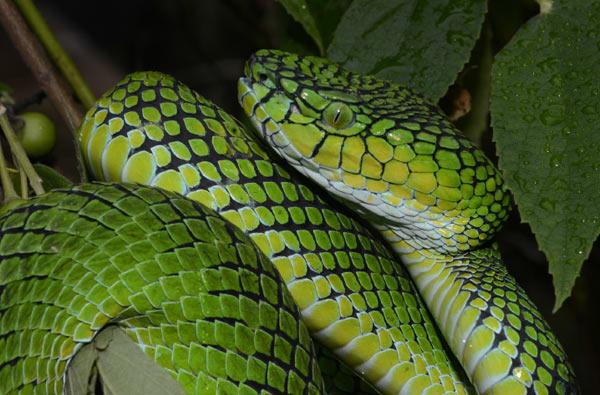Margaritifera laosensis is the only freshwater pearl mussel species known to inhabit tropical water systems, and is a traditional part of the diet of villagers in Northern Laos. However, the species is listed as Endangered by the IUCN. A study published recently in mongabay.com’s open-access journal Tropical Conservation Science found that the dwindling populations of the bivalve would benefit from a ban on their capture.
“We believe that the most significant threat to Indochinese pearl mussel populations comes from harvest by local people as well as from expansion of agricultural land into stream riparian zones,” the authors write.
The study also identifies threats to M. laosensis from river flow regulation, dam construction and pollution caused by deforestation.
According to Global Forest Watch, the region surrounding many of the sample sites lost 3 percent of its forest cover from 2001 through 2012. The authors write “deforestation and agriculture are leading to increased water pollution in this region,” adding that dams along the Nam Pe and Nam Long rivers cause thick layers of decomposing plant matter to accumulate and no M. laosensismussels were found in such areas.
The research team surveyed 10 rivers, finding M. laosensis in only two, with low mussel density at each. However, the researchers also found small, young mussels at the sites, indicating the populations are reproductively viable. Previous studies reported one other reproducing population at a site in Vietnam.
“Reproductively viable populations were found only in the Nam Long and Nam Pe rivers, which are two of the only three known viable populations of this species in the world.”
According to the authors, M. laosensis is an umbrella species, in that its protection would also protect other species in its ecological community. The researchers write that protection of these pearl mussels would improve the environmental conditions of their habitat, which is limited to rivers in Northern Laos, Northwestern Vietnam, Northern Thailand and Northeastern Myanmar.
Not only may protection of M. laosensis safeguard other wildlife species in the area, but it may also benefit human communities.
“These changes will bring positive effects to local communities: more clear water for home needs, longer navigation period due to increase of high water level period, and increased fish catch,” write the authors.
Citations:
- Bolotov, I.; Vikhrev, I.; Bespalaya, Y.; Artamonova V.; Gofarov M.; Kolosova, J.; Kondakov A.; Makhrov A.; Frolov A.; Tumpeesuwan S.; Lyubas A.; Romanis T.; Titova K. 2014, Ecology and conservation of the endangered Indochinese freshwater pearl mussel, Margaritifera laosensis (Lea, 1863) in the Nam Pe and Nam Long rivers, Northern Laos. Tropical Conservation Science, Vol.7 (4):706-719
- Hansen, M. C., P. V. Potapov, R. Moore, M. Hancher, S. A. Turubanova, A. Tyukavina, D. Thau, S. V. Stehman, S. J. Goetz, T. R. Loveland, A. Kommareddy, A. Egorov, L. Chini, C. O. Justice, and J. R. G. Townshend. 2013. “Hansen/UMD/Google/USGS/NASA Tree Cover Loss and Gain Area.” University of Maryland, Google, USGS, and NASA. Accessed through Global Forest Watch on Dec. 23, 2014. www.globalforestwatch.org.
This article was originally written and published by Santiago Sáez Moreno, a contributing writer for news.mongabay.com. For the original article and more information, please click HERE.

